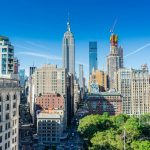In the heart of bustling cities, amongst the skyscrapers and metropolis, there lies a dynamic relationship between urbanization and biodiversity. This intricate relationship not only shapes the ecological health of the city but also has profound impacts on the well-being and health of its residents. Urban biodiversity, a term that might sound like an oxymoron to some, refers to the variety and richness of life, including plants, animals, and microorganisms, in urban areas. In this article, we delve into the role of urban biodiversity in enhancing resident well-being and health, substantiating its significance in urban planning.
The Importance of Urban Biodiversity
Before proceeding, it’s crucial to understand why urban biodiversity holds such paramount importance. This section sheds light on the underlying reasons.
Additional reading : What Impact Do Community Supported Agriculture (CSA) Programs Have on Dietary Behaviors?
Urban biodiversity is not just about having more trees or parks. It is about creating rich, diverse ecological systems within urban areas that can regulate local climates, reduce air pollution, and provide habitat for a variety of species. For residents, these ecosystems offer opportunities for recreation, physical activity, and social interaction. They also help to reduce stress levels and improve mental health.
A study by Stanford University found that walking in natural environments can lead to a decrease in rumination, a marker of mental health problems. This research provided strong evidence that access to biodiversity-rich areas in cities can significantly improve residents’ psychological health.
Additional reading : How Does the Adoption of Precision Medicine Impact Healthcare Costs and Outcomes?
Urban biodiversity also plays a vital role in mitigating the urban heat island effect. This phenomenon, caused by human activities and urban structures, leads to higher temperatures in urban areas than in surrounding rural areas. Green spaces and water bodies within cities can help cool the environment, improving residents’ comfort and reducing the risk of heat-related diseases.
Urban Biodiversity and Physical Health
Let’s now turn our attention to the more tangible, direct benefits of urban biodiversity on physical health.
Urban biodiversity creates an environment conducive to physical activity. Natural spaces such as parks and greenways encourage residents to walk, cycle, or engage in other forms of exercise, thereby promoting physical health. In fact, research published in the journal “Nature” found that people living in neighborhoods with more green space had lower rates of mortality and reported better overall health.
In addition to promoting physical activity, urban biodiversity also contributes to improved air quality. Plants and trees absorb harmful pollutants, including carbon dioxide, sulfur dioxide, and particulate matter, which can cause respiratory problems and other health issues. In cities with more green spaces, residents are exposed to cleaner air, reducing the risk of diseases like asthma and lung cancer.
Another exciting aspect of urban biodiversity is its role in boosting the immune system. Exposure to a variety of microorganisms in natural environments can help strengthen the immune system and protect against allergies and autoimmune diseases. This is referred to as the “hygiene hypothesis,” which suggests that living in overly sanitized environments can lead to a weak immune system.
Urban Biodiversity and Mental Health
In this section, we explore the relationship between urban biodiversity and mental health, an often overlooked facet of well-being.
Access to diverse natural environments within cities can have a profound positive impact on mental health. Research shows that spending time in natural settings can reduce stress, anxiety, and depression, improve mood, and boost cognitive function.
One of the mechanisms behind these benefits is attention restoration. Natural environments are rich in stimuli that engage the brain in a relaxed, effortless form of attention, which can help restore mental energy and focus. This is particularly important in today’s digital age, where constant screen time and information overload can lead to cognitive fatigue.
Moreover, urban biodiversity can provide opportunities for mindfulness and connection with nature, which are associated with improved psychological well-being. Engaging with nature can foster a sense of belonging and interconnectedness, alleviating feelings of loneliness and isolation.
Urban Biodiversity and Social Health
Lastly, let’s examine the social dimension of health, another critical aspect of well-being that can be enhanced by urban biodiversity.
Urban green spaces can serve as social hubs, fostering community interaction and cohesion. They provide venues for leisure, recreation, and cultural activities, where people can interact, form bonds and create shared memories. Social interactions in these settings can help build social capital, improve social cohesion, and reduce crime rates, contributing to a sense of safety and belonging.
Furthermore, urban biodiversity can play a role in promoting social equity. Access to green spaces and the associated benefits should not be a privilege limited to certain groups. Urban planners should aim for equal distribution of green spaces across different neighborhoods, ensuring that all residents, regardless of their socioeconomic status, can enjoy the benefits of urban biodiversity.
In summary, urban biodiversity has a multifaceted role in enhancing resident well-being and health, ranging from physical and mental health benefits to social well-being. Recognizing this can inform urban planning strategies, making cities not just more sustainable, but also healthier and more livable for their residents.
The Role of Urban Planning in Promoting Urban Biodiversity
Understanding the crucial role that urban biodiversity plays in enhancing resident well-being and health, it is equally important to examine the role of urban planning in promoting this biodiversity. Urban planning refers to the technical and political process concerned with the use of land and the design of the urban environment.
Urban planners have a significant role in shaping the urban landscape and enhancing biodiversity within cities. They can incorporate green spaces, such as parks, gardens, and green roofs, into urban designs. These spaces not only provide habitats for a wide range of species but also offer recreational areas for residents, promoting physical and mental health.
Consideration must also be given to the preservation of existing natural habitats within urban areas, which can provide refuge for local wildlife and contribute to ecological stability. This can be achieved by implementing sustainable development practices, such as the use of green building materials and energy-efficient technologies.
Moreover, urban planners can promote biodiversity by incorporating water bodies into city designs. Lakes, ponds, and rivers can serve as habitats for aquatic species and birds, enhancing the overall diversity of life in urban areas.
Urban planning should also take into account the equitable distribution of green spaces. All residents, regardless of their socioeconomic status, should have equal access to the benefits of urban biodiversity. This can be achieved by ensuring that green spaces are accessible and well-distributed across different neighborhoods.
Conclusion
Urban biodiversity holds a significant role in enhancing the well-being and health of city residents. From a physical health standpoint, it encourages physical activity, improves air quality, and contributes to a robust immune system. Its positive impacts on mental health are seen in reduced stress levels, improved mood, increased cognitive function, and opportunities for mindfulness. With its ability to foster community interaction and cohesion, urban biodiversity also promotes social health.
Urban planning plays a crucial role to ensure urban biodiversity thrives within cities, creating an environment that is sustainable, livable, and beneficial to all residents. Urban planners must incorporate green spaces into city designs, preserve existing natural habitats, and ensure equitable access to these spaces. In this way, cities can develop into spaces that not only house a diverse array of species but also promote the well-being and health of their residents.
In summary, the substantial role of urban biodiversity in resident well-being and health makes it an essential factor in urban planning. Enhancing and preserving urban biodiversity can lead to cities that are not only more sustainable and diverse but also healthier and more livable for their residents. Therefore, urban biodiversity should be at the forefront of urban development and planning strategies, paving the way towards healthier and happier cities.











